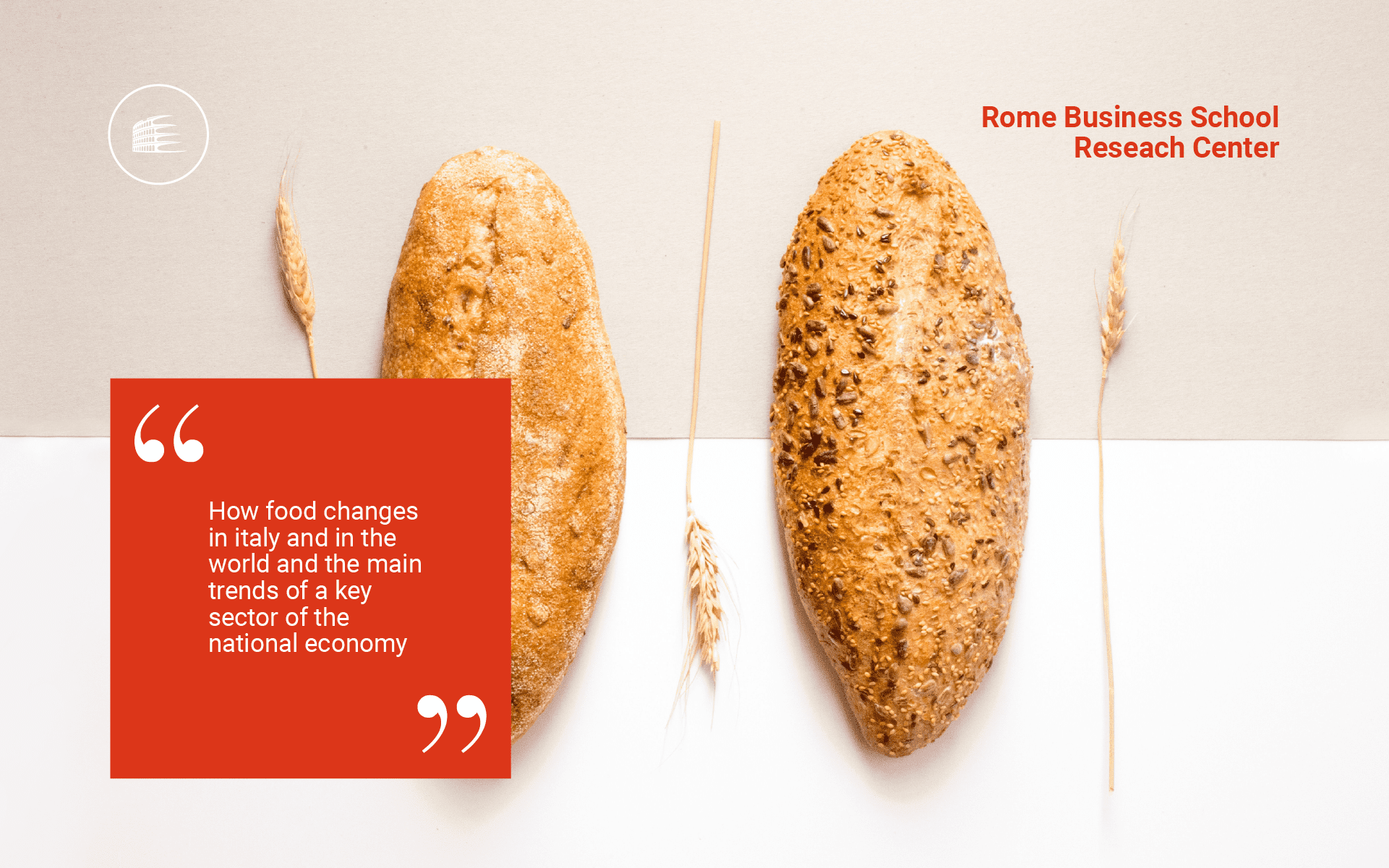How food changes in Italy and in the world and the main trends of a key sector of the national economy

The global trends and the turnover of the Made in Italy products, the new habits of functional nutrition, the changes in the food sector at the time of Covid-19 and the future challenges, starting with the fight against obesity, the containment of which could prevent 688 thousand non-communicable diseases by 2050, save € 278 million per year in healthcare expenditure and increase the employment and productivity of a share equal to 18 thousand full-time workers per year.
Rome Business School – Research Center carried out a research on “The importance of healthy eating: trends and challenges in Italy and in the world”.
According to the research, last year has been the protagonist of an increase in consumer interest in healthy eating, the high rates of obesity and diabetes have made the world and Italian population increasingly aware of the relationship between food and long-term health, while the current epidemiological emergency from COVID-19 has helped to revolutionize food consumption not only in the country but throughout the entire world. The restrictions came out from the sanitary emergency has in fact led to a high purchase of pantry food products (37% more than 10% of fresh food) and a return to the consumption of “simple” foods such as flour, bread and rice which tripled in 2020. The current situation has also highlighted the attention of the consumers towards the origin of the products and raw material used in the manufacturing process.
Rome Business School – Research Center showed several macro-factors that characterize the main trends related to the current food market:
The 10% increase in the world population (from 7 to 7.7 billion inhabitants) and the changes in the choices of consumer products in the last year have led to an increase in the production of cereals of 17.3% since 2012 to date;
Currently, 60% of the world’s nutrition is based on 3 cereals: wheat, rice and corn, with an improvement on the quality of life resulting from the high consumption of “simple” and slightly refined foods;
Whiting the country, the made in Italy of food products accounts for 24.4% of the turnover of large agro-food consumption, with over 2.34 billion euros in sell-out for all products that underline their regional identity on packaging. On this front, there is a growing attention for food autarky with consumers particularly attracted to Italianness, with an overall turnover that has exceeded 7.1 billion euros.
On a global level, is growing the attention towards an healthy and sustainable diet and is guiding the production of the companies toward healthier products preferring sustainable and Km0 ingredients.
In Italy, large food chains are focusing on the regional identity of products, which have seen their sales growing by the 26% over the past year (from June 2019 to today). In this context, the ranking of the regions most present on the labels of food products, sees Trentino-Alto Adige in the first place, while in Lazio dropped drastically compared to 2018 of – 2.0% followed by Piedmont and Emilia Romagna. the research also highlighted a substantial focus on “food autarchy”, with consumers particularly attracted to “Italianness”, with an overall turnover that came to exceed 7.1 billion euros in 2019.
Moreover, in Italy, the epidemiological emergency from COVID-19 has found an increase in the indices linked to childhood obesity, in which the long time spent within the home has favored the tendency to a disordered and unhealthy diet. The challenge of the fight against obesity, a growing phenomenon worldwide, remains in the foreground as one of the top priorities on a global scale. In this regard, the research finds that a 20% reduction in calories in foods high in sugar, salt, calories and saturated fat could prevent 688 thousand non-communicable diseases by 2050, saving 278 million euros for year in healthcare expenditure, to increase the employment and productivity of a share equal to 18 thousand full-time workers per year.
This research wanted to deepen the dynamics and trends of a key sector of the economy of our country, focusing as well on the international changes that this sanitary emergency will create and that needs to be supported and followed from the main actors of the social systems.
Among these, the institutions have to be able to promote the adoption of an increasingly healthy and correct lifestyle and food habits, push the industry to continue on researching and innovating towards higher nutritional forms of convenience food and encouraging the diffusion of non-global markets. These new challenges also call into the actions realities such as Rome Business School which in this regard has developed excellent and high-level focused courses to train managers to operates in the food sector with new sustainable skills and capabilities so that they can guide this change of perspective.




